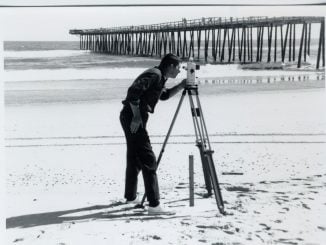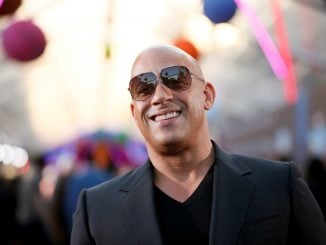
Nov. 22, 1718
Blackbeard’s Death: Off with his head
On Nov. 22, 1718, the infamous pirate Blackbeard was killed. Reported to have been a privateer during Queen Anne’s War, Blackbeard is said to have turned to piracy afterward. He is one of the most famous figures associated with the “Golden Age of Piracy,” which flourished briefly along the North Carolina coast in the early 1700s. In 1717, Blackbeard and his fellow pirates captured the French slaveship La Concorde in the eastern Caribbean. With his new ship, which he renamed Queen Anne’s Revenge, Blackbeard cruised the Caribbean taking ships along the way. Arriving off the coast of Charleston, S.C., in May 1718, Blackbeard blockaded the port for nearly a week in what was perhaps the most brazen act of his piratical career. Blackbeard lived in the town of Bath briefly during the summer of 1718, and soon after attempted to enter what is now Beaufort Inlet with his fleet. The vessels grounded on the ocean floor and were abandoned. Six months later, at Ocracoke Inlet, Blackbeard encountered ships sent by the governor of Virginia, led by Lt. Robert Maynard. In a desperate battle, Blackbeard and several of his crew were killed. Maynard returned to Virginia with the surviving pirates and the grim trophy of Blackbeard’s severed head.
Nov. 23, 1902
Walter Reed died
On Nov. 23, 1902, Walter Reed, head of U.S. Yellow Fever Commission in Cuba, died. During his time in Cuba, Reed conclusively demonstrated that mosquitoes transmitted the deadly disease. Reed called Hertford County home for much of his life before medical school. Reed graduated from medical school at the University of Virginia at 17 and continued his education at Bellevue Hospital Medical College in Manhattan. He joined the U.S. Army Medical Corps in 1875, eventually becoming curator of the Army Medical Museum in Washington and a professor at the Army medical school. By the outbreak of the Spanish-American War, Reed was considered a pioneer in the field of bacteriology. His interest in the cause of yellow fever was timely, as epidemics broke out in camps in Cuba and elsewhere. In 1900, Reed led the fourth U. S. Army Yellow Fever Commission. Reed was buried in Arlington National Cemetery. An Army hospital completed in 1909 in Washington, D.C., was named in his honor. The museum of which he was curator is now the National Museum of Health and Medicine.
Nov. 23, 1963
Raleigh connection to JFK assassination
On Nov. 23, 1963, as the clock neared midnight in Raleigh, an attempt was allegedly made at the Dallas County jail on behalf of Lee Harvey Oswald to contact one or two phone numbers in the 919 area code. It was the day after Oswald was arrested for the assassination of President John F. Kennedy. What has come to be dubbed the “Raleigh Call” went unrecorded in the Warren Commission investigation. Later in the 1960s, one of the Dallas County switchboard operators on duty that night shared a story about the call with authorities. The story goes that the operator reported that she had been asked to call two numbers in Raleigh, although without success, and then threw away the memo slip from the fruitless calls. Apparently, she later recreated a slip, as a souvenir, that included two phone numbers along with the name “John Hurt.” Little has come of the story, and mysteries surrounding the call have contributed to assassination conspiracy theories. In July 1980, both the Raleigh Spectator and the News & Observer printed articles attempting to expose details about the call, its related personalities and chain of events. The “Raleigh Call” and an Oswald connection to Raleigh still remain an unsolved mystery.
Nov. 26, 1744
Alexander Mebane born in Orange County
On Nov. 26, 1744, Alexander Mebane was born at Hawfields in Orange County. An ardent patriot, Mebane played an active role in the Revolutionary War. In December 1776, he served as a delegate to the Provincial Congress in Halifax and, the following year, became sheriff of Orange County, a post he held until 1780. Mebane also served as an officer in the Orange County militia. At the war’s conclusion, Mebane was elected as an Orange County representative to the General Assembly and served as brigadier general of Hillsborough District militia. He also served as auditor of the Hillsborough Constitutional Convention of 1788 and the Fayetteville Convention of 1789. An Anti-Federalist, Mebane voted against ratification unless a bill of rights was included. That same year, Mebane joined the first board of trustees of the University of North Carolina. In 1792, he served on the committee that chose New Hope Chapel Hill as the site for the new school. He even helped lay the cornerstone of Old East, the first building erected on campus. In 1793, Mebane was elected to Congress. The Alamance County town of Mebane is named in his honor.
Nov. 27, 1962
Martin Luther King Jr.’s rehearsal speech in Rocky Mount
On Nov. 27, 1962, Martin Luther King Jr., delivered a speech in Rocky Mount. Before a crowd of nearly 2,000 in the gymnasium at Booker T. Washington High School, King used a number of expressions that made their way into his landmark “I Have a Dream” address at the Lincoln Memorial, which was part of the March on Washington in August 1963. Near the close he built toward these lines: “I have a dream that one day right here in Rocky Mount, the sons of former slaves and the sons of former slave owners will meet at the table of brotherhood, knowing that one God brought man to the face of the Earth. I have a dream tonight that one day my little daughter and my two sons will grow up in a world not conscious of the color of their skin, but only conscious of the fact that they are members of the human race…” Clayborne Carson, editor of the King Papers, notes that while this was not the first use of the “I have a dream” phrase, it “appears to be an important new rhetorical formulation.” By the spring and summer of 1963 the words were among the most frequent of King’s refrains.
Source: N.C. Archives



